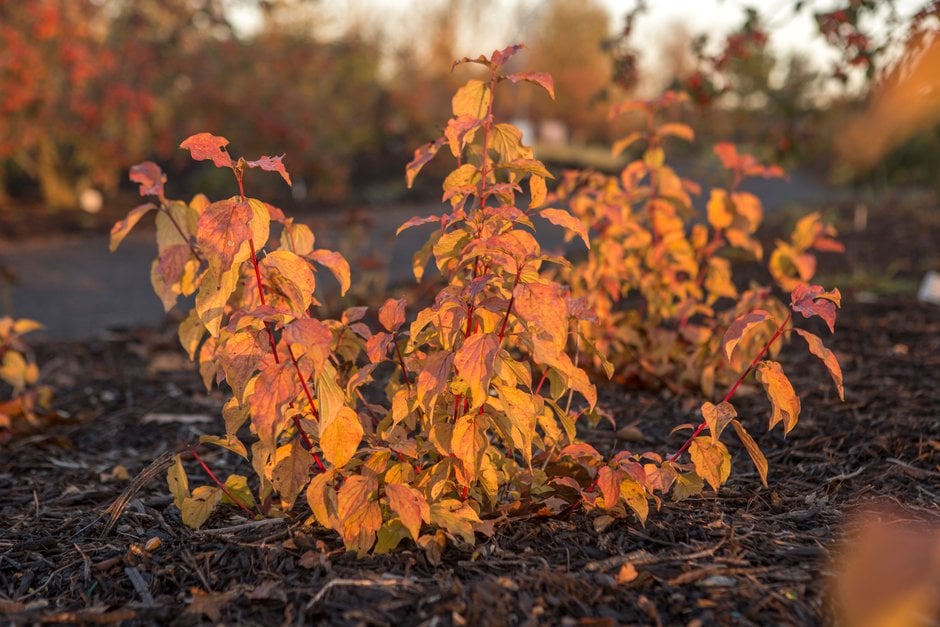Size
Ultimate height
1.5–2.5 metresTime to ultimate height
5–10 yearsUltimate spread
1.5–2.5 metresGrowing conditions
Moisture
Moist but well–drained, Poorly–drained, Well–drainedpH
Acid, Alkaline, NeutralColour & scent
| Stem | Flower | Foliage | Fruit | |
| Spring | Green | |||
|---|---|---|---|---|
| Summer | White | Green | ||
| Autumn | Orange Pink | Black | ||
| Winter | Orange Red |
Position
- Full sun
- Partial shade
Aspect
South–facing or East–facing or North–facing or West–facing
Exposure
Exposed or Sheltered Hardiness
H5Botanical details
- Family
- Cornaceae
- Native to GB / Ireland
- No
- Foliage
- Deciduous
- Habit
- Suckering
- Genus
Cornus can be deciduous shrubs or trees, or creeping, woody-based perennials, some with brightly coloured young stems. Tiny flowers are borne in dense clusters, sometimes with showy bracts. Many have fine autumn colour
- Name status
Accepted
How to grow
Cultivation
Will grow in most soil conditions in sun or partial shade. For more information see winter stem colour cultivation or flowering dogwood cultivation
Propagation
Propagate by hardwood cuttings in autumn
Suggested planting locations and garden types
- Coastal
- Wildlife gardens
- Wildflower meadow
- Cottage and informal garden
- Flower borders and beds
- Hedging and screens
Pruning
Pruning group 7 every couple of years to produce colourful young shoots will help to keep the shrub compact
Pests
Generally pest-free but may be susceptible to horse chestnut scale
Diseases
May be susceptible to cornus anthracnose which may affect weak shoots
Love gardening
Sign up to receive regular gardening tips, inspiration, offers and more
View our Privacy Policy
Get involved
The Royal Horticultural Society is the UK’s leading gardening charity. We aim to enrich everyone’s life through plants, and make the UK a greener and more beautiful place.
